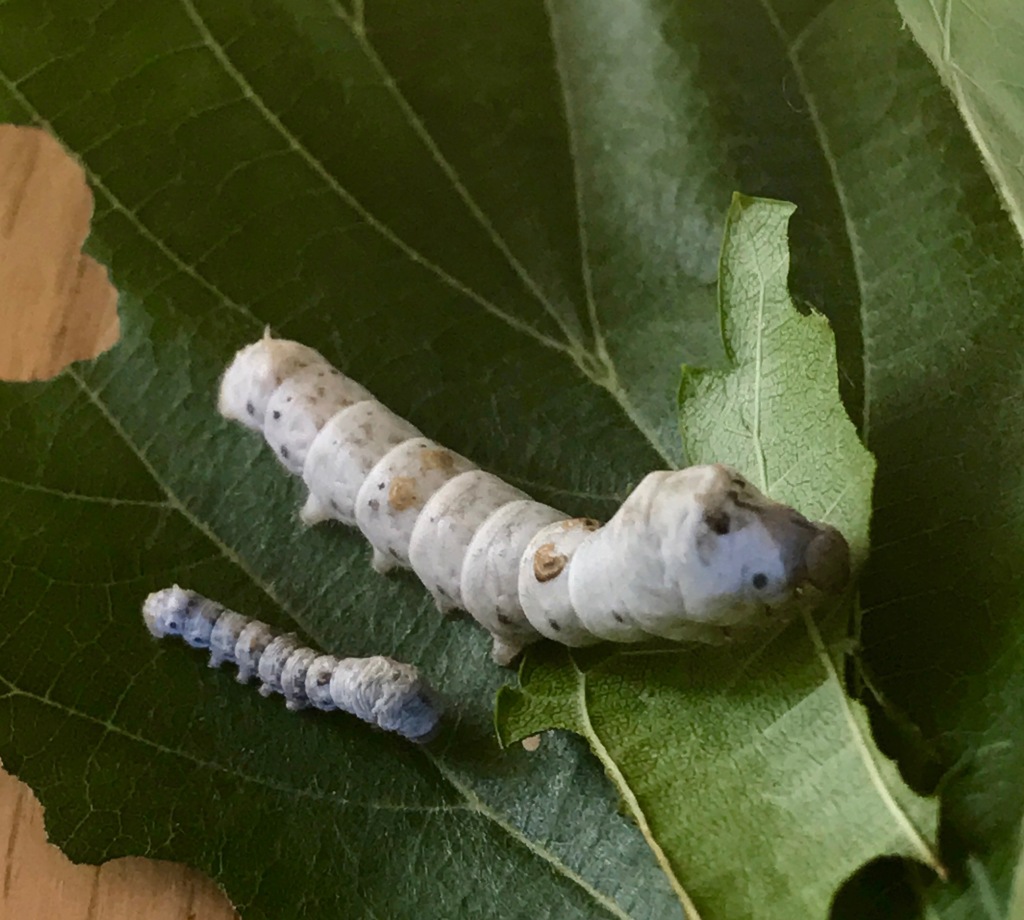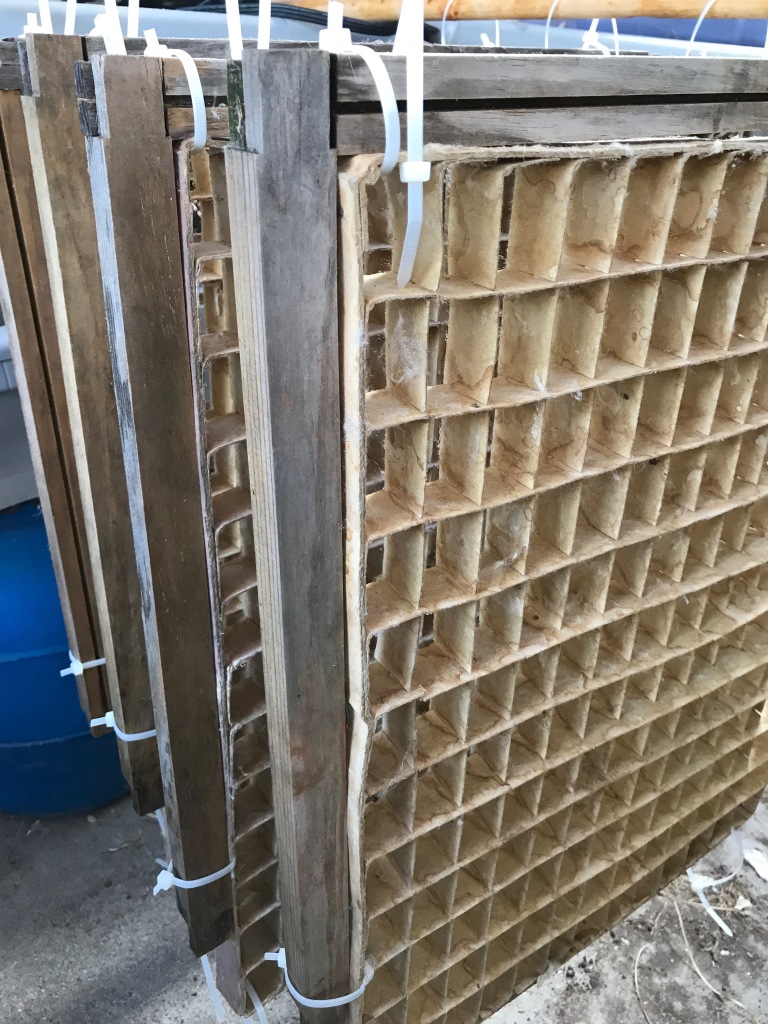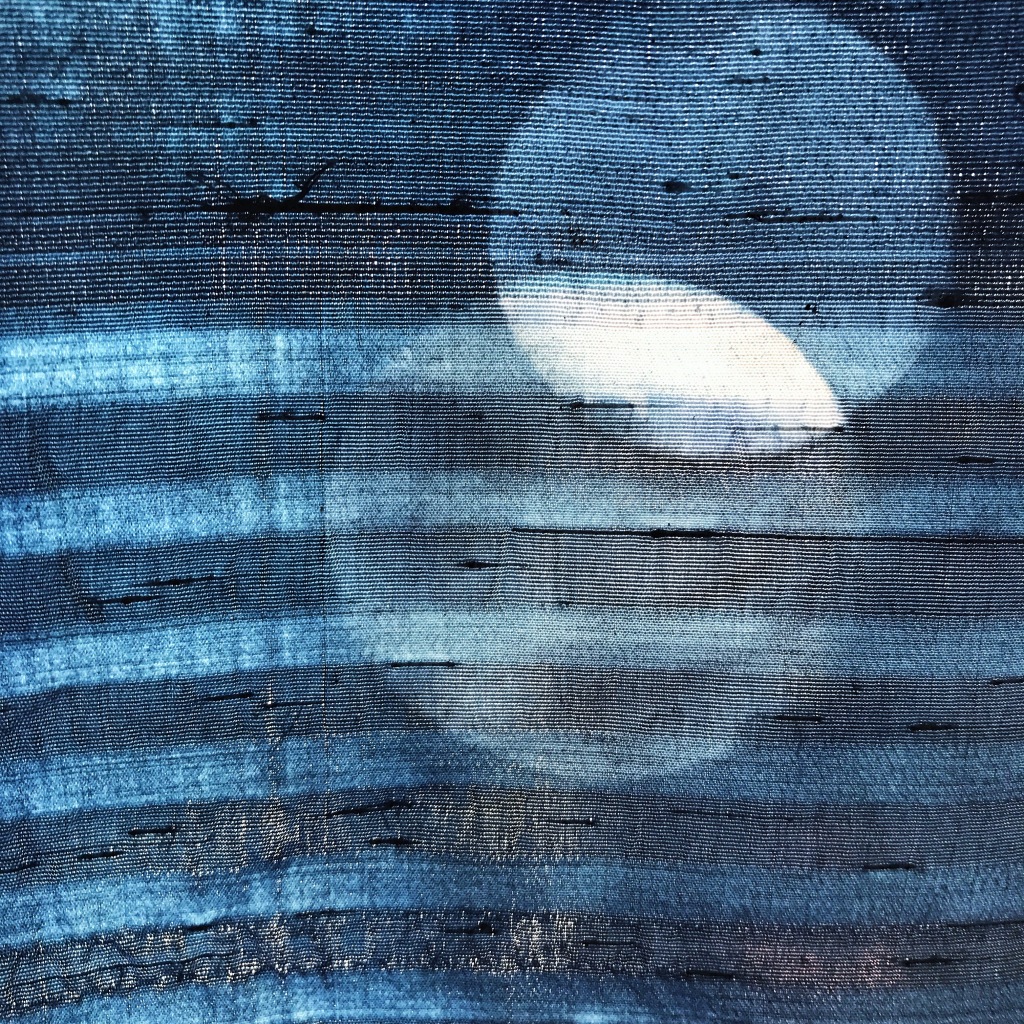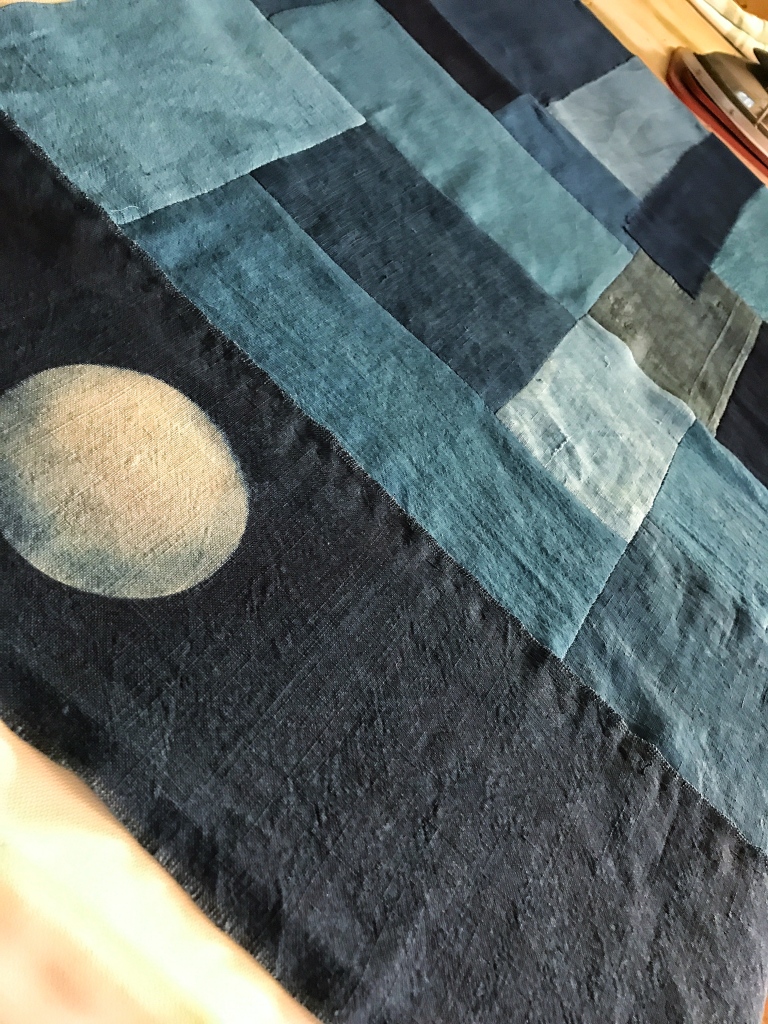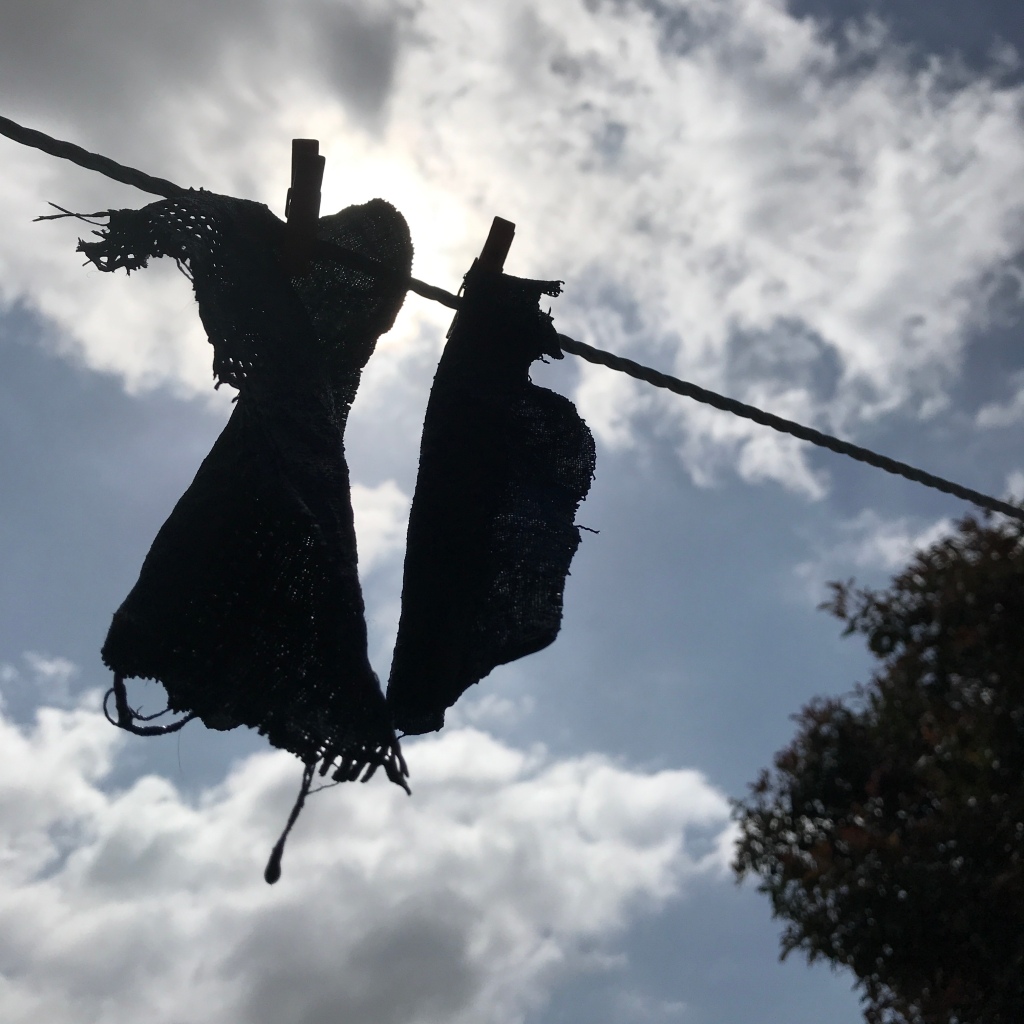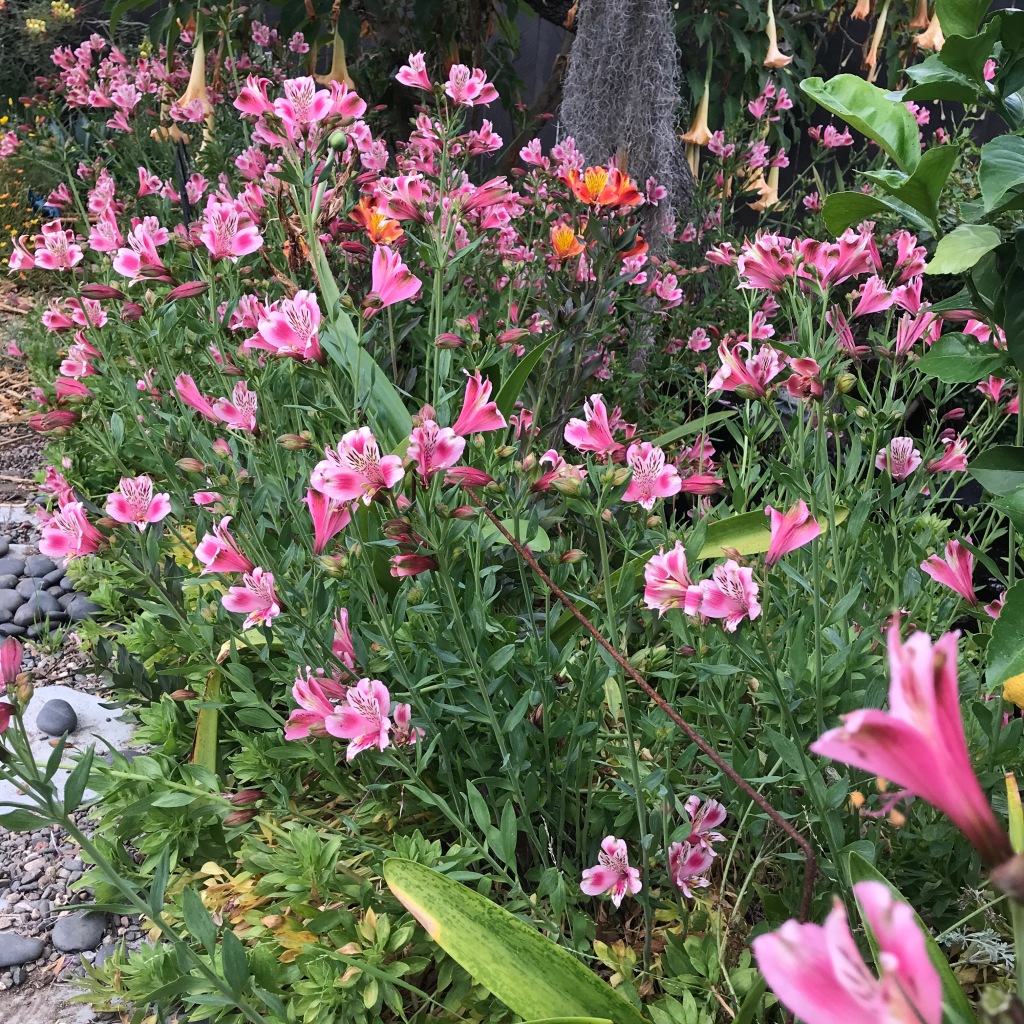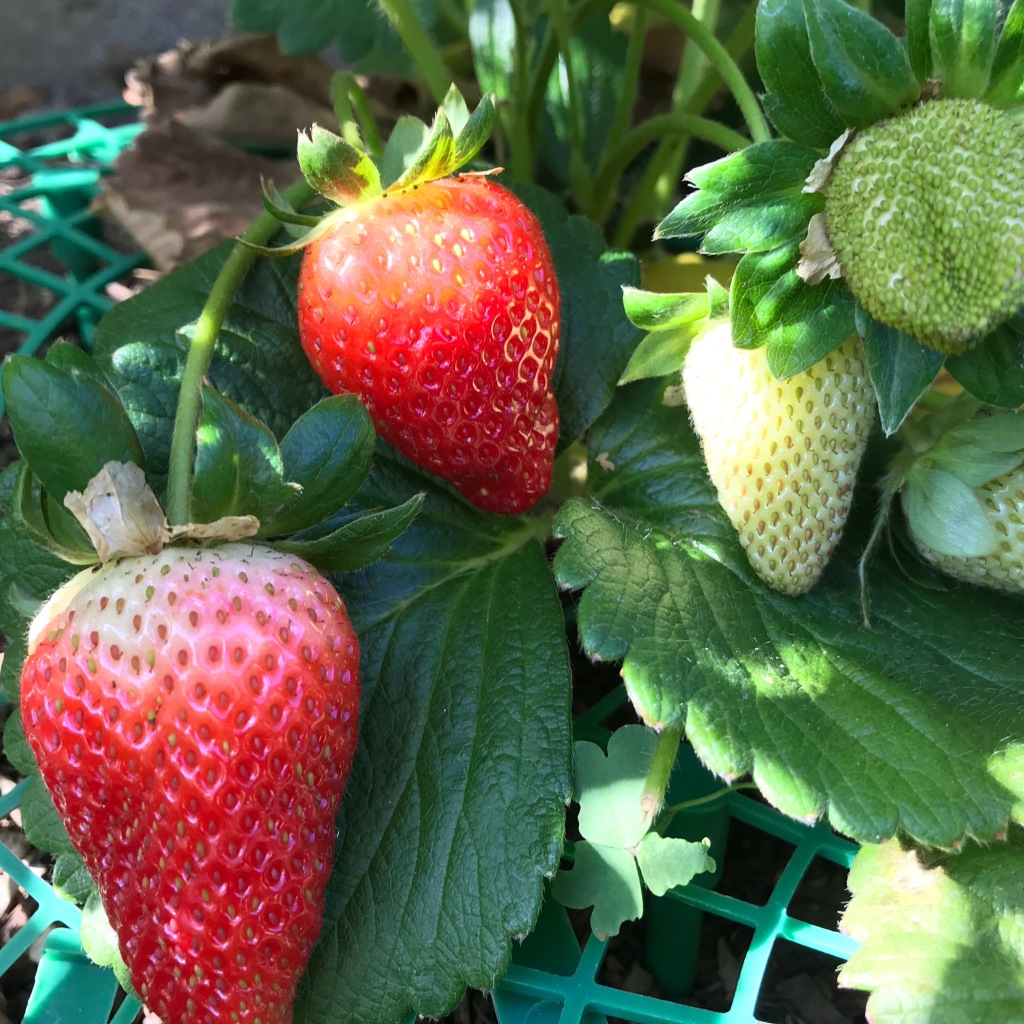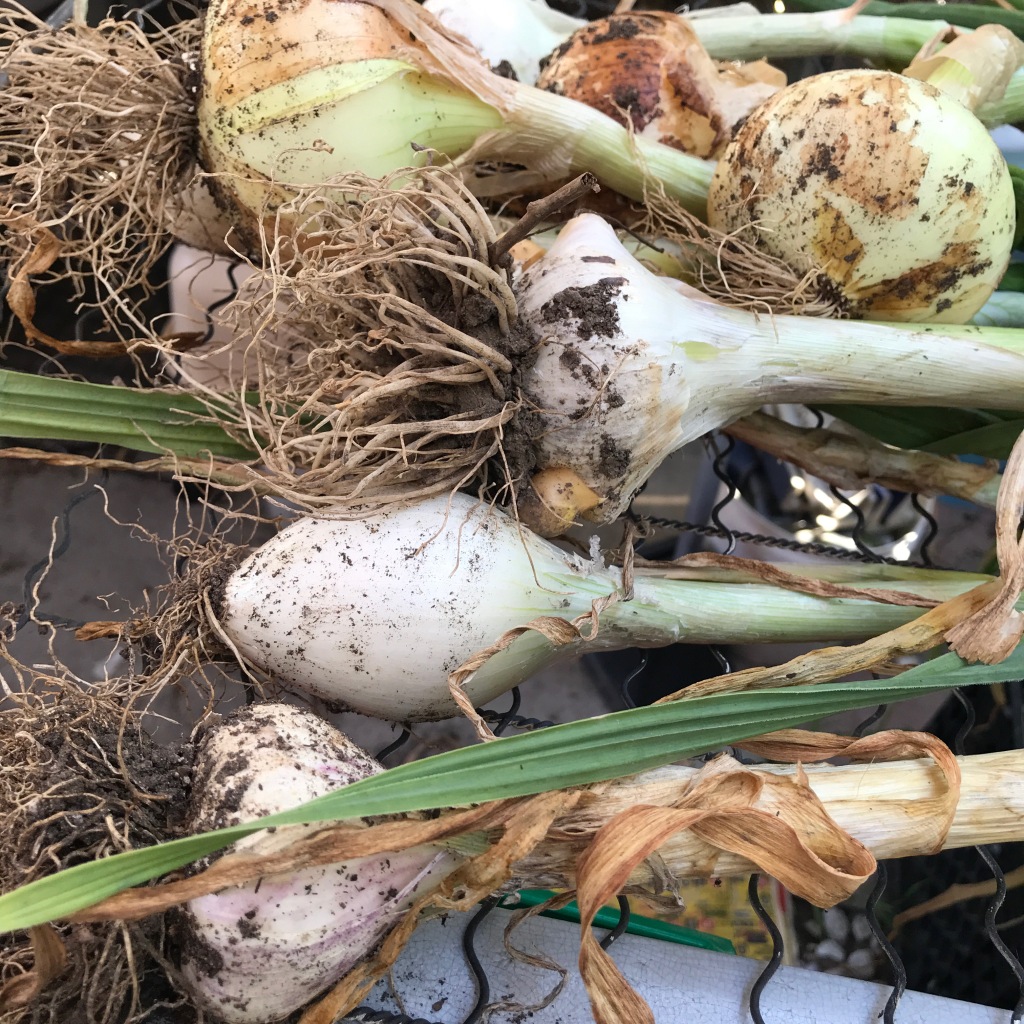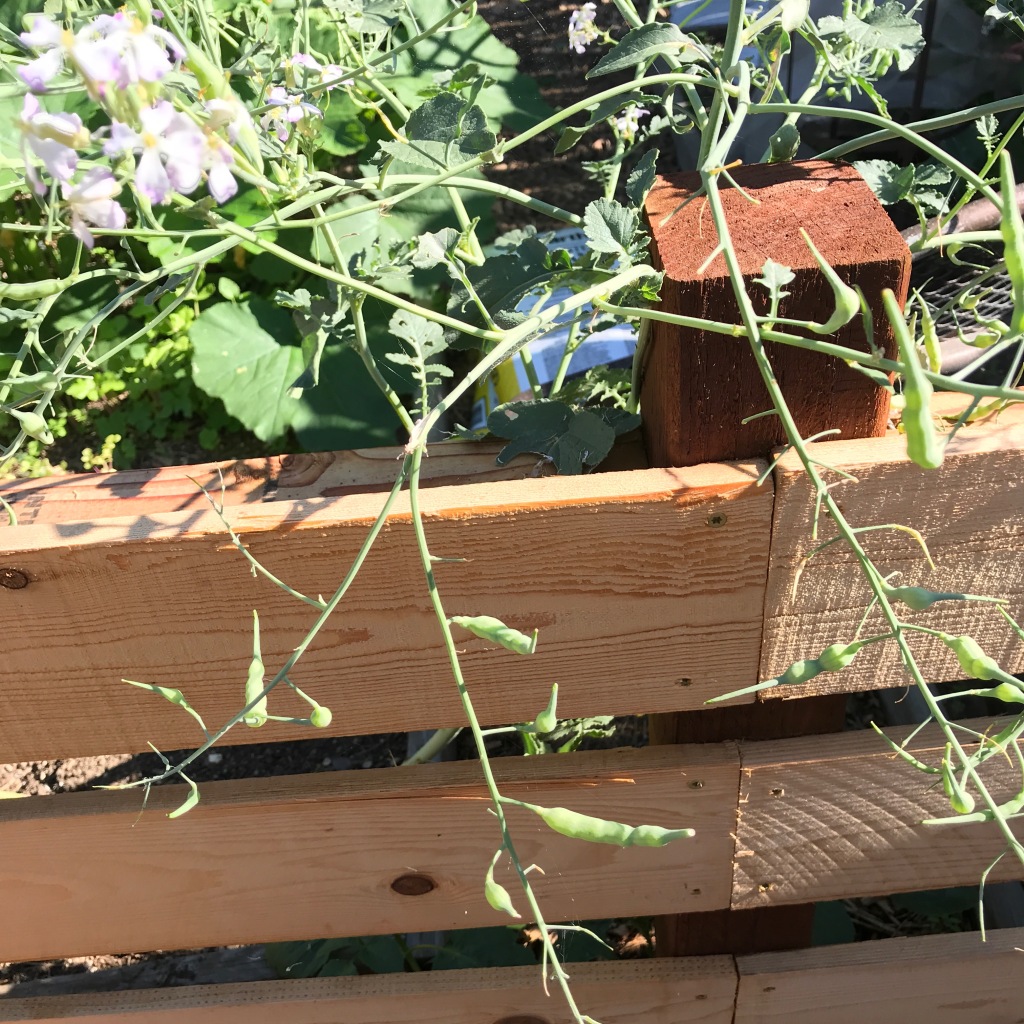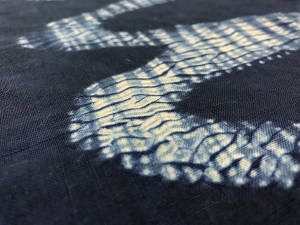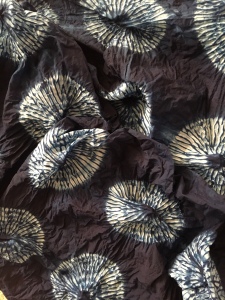dreaming big inside
my small silk cocoon today
i wonder what if

paper frames 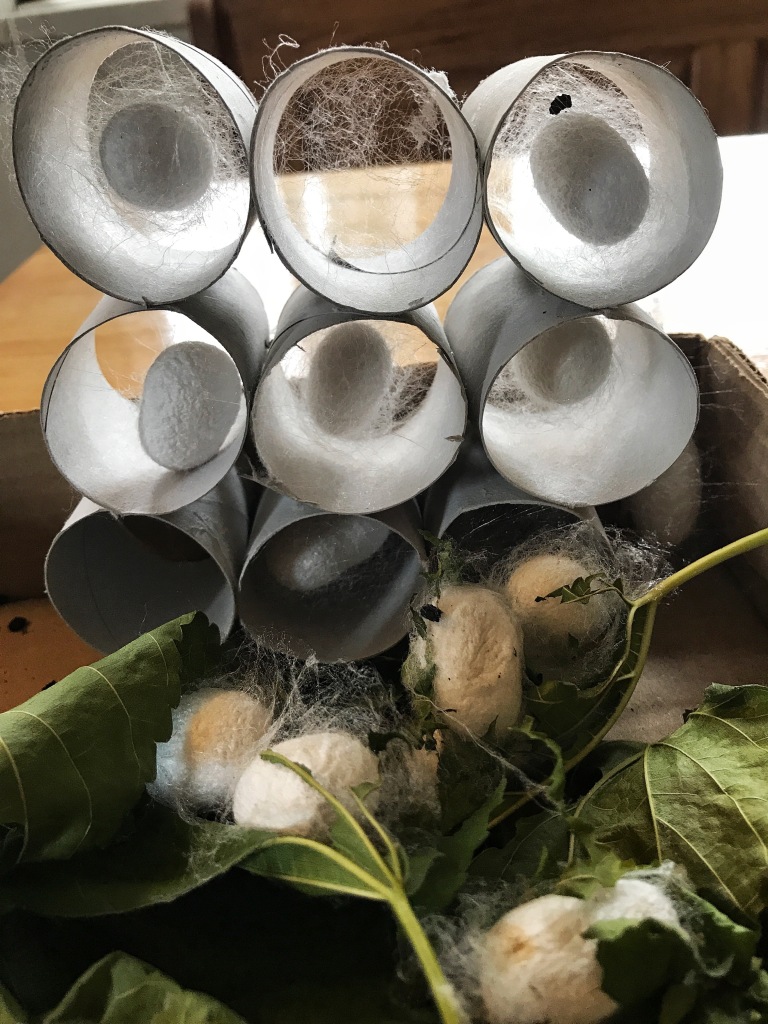
TP roll capsule hotel and mulberry leaf futon 
straw bedding
big dreams small spaces
when will i emerge again
to fly free once more
I like haiku because it distils a thought…
Update:
The silkworms are mostly finishing cocooning with a few stragglers that hatched late. I lost surprisingly few. The two batches at neighboring homes fared less well. One lost all of them (20) and the other lost 16 of their 20 but have 4 that cocooned. I have around 200. At least 50 of the eggs did not hatch at the beginning but when I ordered 200 I was sent 300 (ish). I prepared a cocooning tray for the girls next door who lost all theirs which looked like this:

It’s kind of hard to tell here, but silkworms have a yellowish almost transparent cast to them when they are ready to cocoon. They are filled with sericin to spin their cocoons. Left to free range, they would find a couple of branches or a dried curled up mulberry leaf in which to spin a hammock , and finally a cocoon. I made this with both plus a few TP rolls cut in half so they can see what the cats prefer. Of course letting them cocoon in dried leaf makes for messier collecting of cocoons and renders the kibisu (outer silk) fibers inexorably mixed with leaf detritus. The Japanese have a cool machine for removing the cocoons from the frames and also for rolling the cocoons to remove the outer kibisu-all clear of any leaf material and usable for other purposes without too much effort. It will be 2-3 weeks before moths emerge. Many of mine will be dried, killing the pupae inside and the cocoons stored in the freezer for later reeling.
And if silkworms didn’t have enough to do, you can read about their contribution in developing a vaccine for COVID-19! From The Mainichi and Kyushu University.
I made a little discovery this past week in regards to the native narrow leaf milkweed. I have wondered since last year why the monarch caterpillars don’t seem to utilize it as opposed to the tropical milkweed which keeps popping up in the yard here and there. They also like the balloon plant (milkweed) very much. They LOVE the small broad leaf native milkweed that they eat down to nubs every chance they get- so much so that it never seems to get a good start here. Fortunately, it spreads from underground and keeps popping back up.
Back to the narrow leaf milkweed… I kept seeing the monarchs laying eggs recently on the flowers (it’s flowering now). The flowers are small clusters of tiny florets at the tip of the stems. I realized they probably don’t use the leaves as the leaves are so narrow and unstable they can’t really land on them to deposit their eggs on the underside of the leaf, but the flowers are broad and stable. I started noticing tiny spiders and even some of the tiny praying mantis on the flowers and I thought they would devour and eat the eggs or any larva that hatched-bummer. Then I started noticing that the flower heads are all wilting and dyeing! I thought- oh well….
then this!
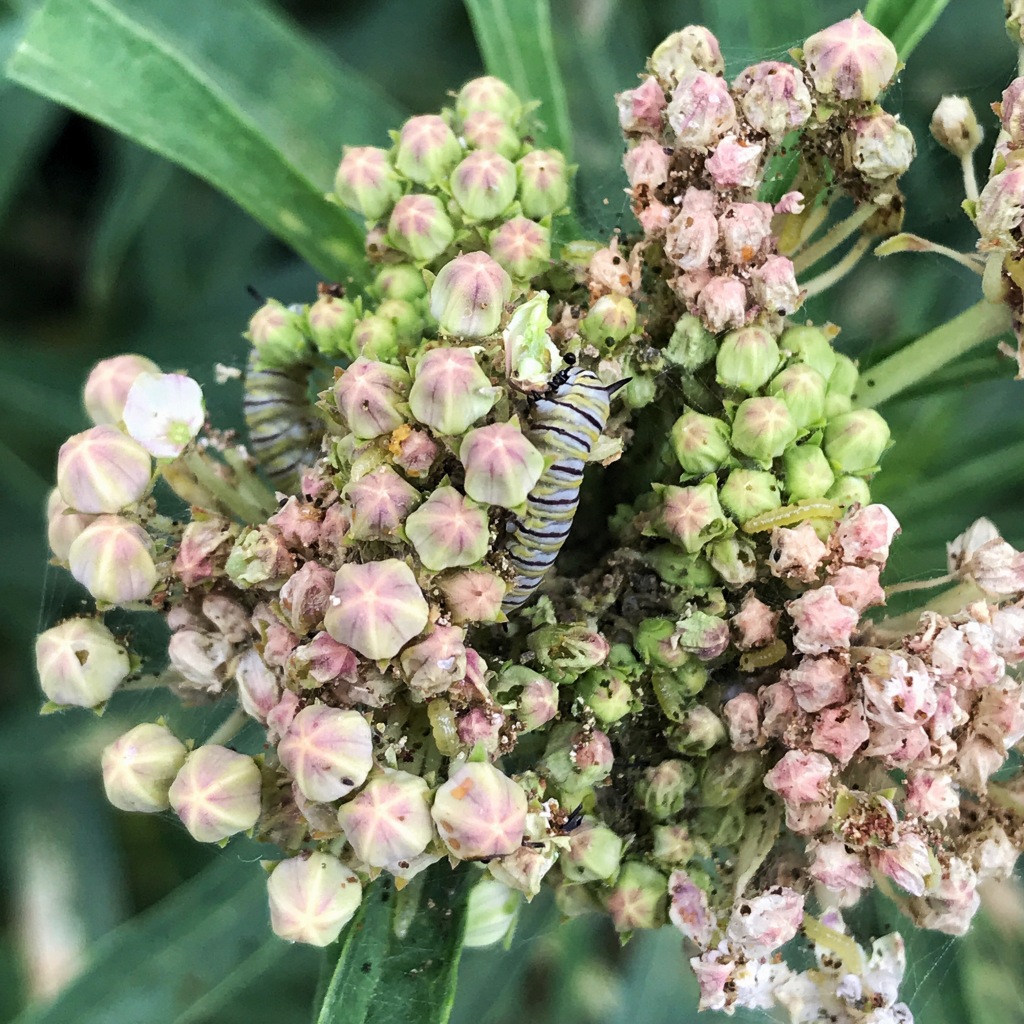
in the flowers! they eat the flowers first i guess 
just hatched and eating flowers 
narrow leaf milkweed
I actually started to cut off some of the dead flowers thinking the spider infestation might spread. So now I have a little box of monarch caterpillars to watch over until they get big enough to transfer back to the plant!
We took a trip out on Monday to get away from our cocoon and to visit MIL in hers at the nursing/board and care facility. Since she is in hospice they allow restricted visits- PPE in place. We visit outside mostly. She fell Sunday and thankfully did not break anything but has some pretty colorful facial bruises from bonking her nose. She is doing ok all things considered and always welcomes the visit. It is very difficult communicating since she also has advanced aphasia. We do our best.
Afterward, we went to the new Mitsua market and got Japanese bento for a picnic at the South Coast Botanic Gardens. They really have done a good job reopening there. Online time spaced ticketing, contactless entry, masks required, distance marked cueing (when needed), wide open outdoor spaces. They allow picnics in the meadows and there were actually very few people. Cost is $15 per person and you can stay as long as you like. A family annual membership is $65 for unlimited access for 2 for the year. We did that. They also have special dog walking tickets twice a month in the evenings (they are open 8 am- 8 pm). Eighty seven acres of gardens and trails. Sculpture too!
A great place all around! Highly recommended for corona daytripping.

garden seedling protection 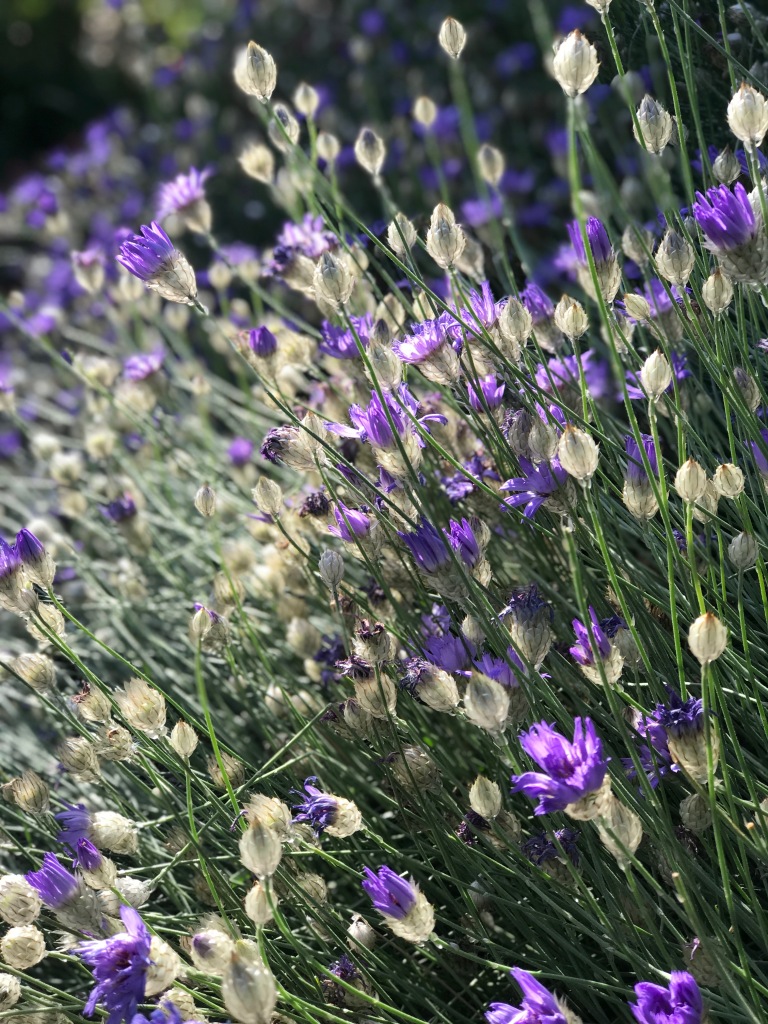
nice border-dont know what this is 
close up 
again, another border 
liked it but no tag… 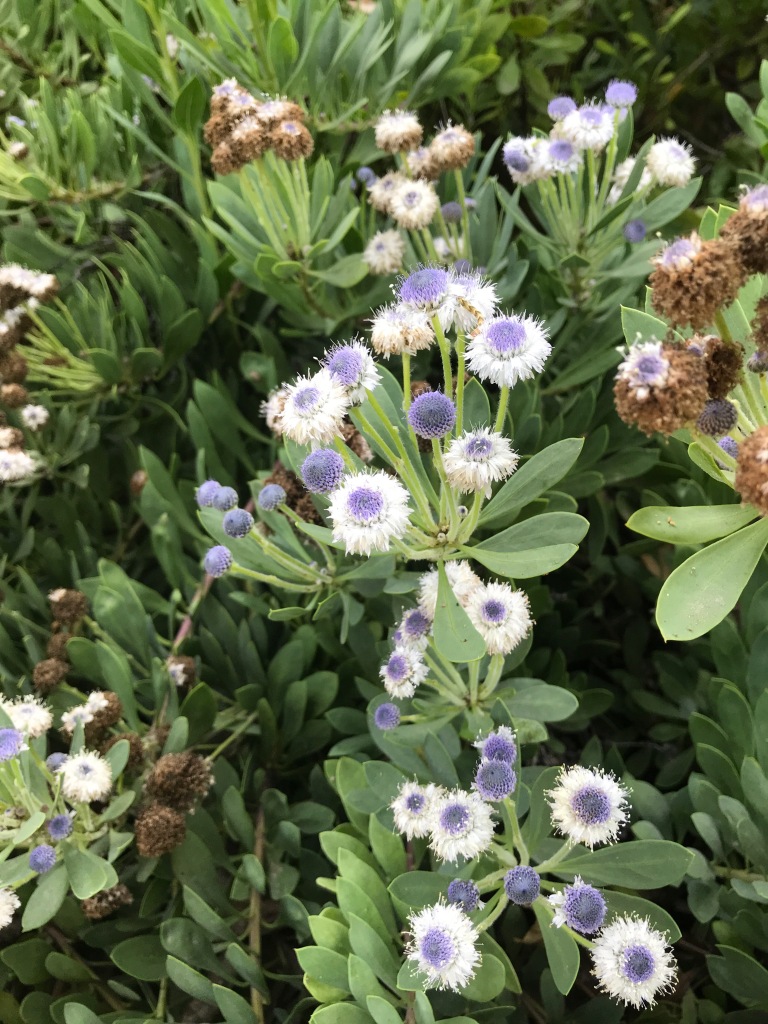
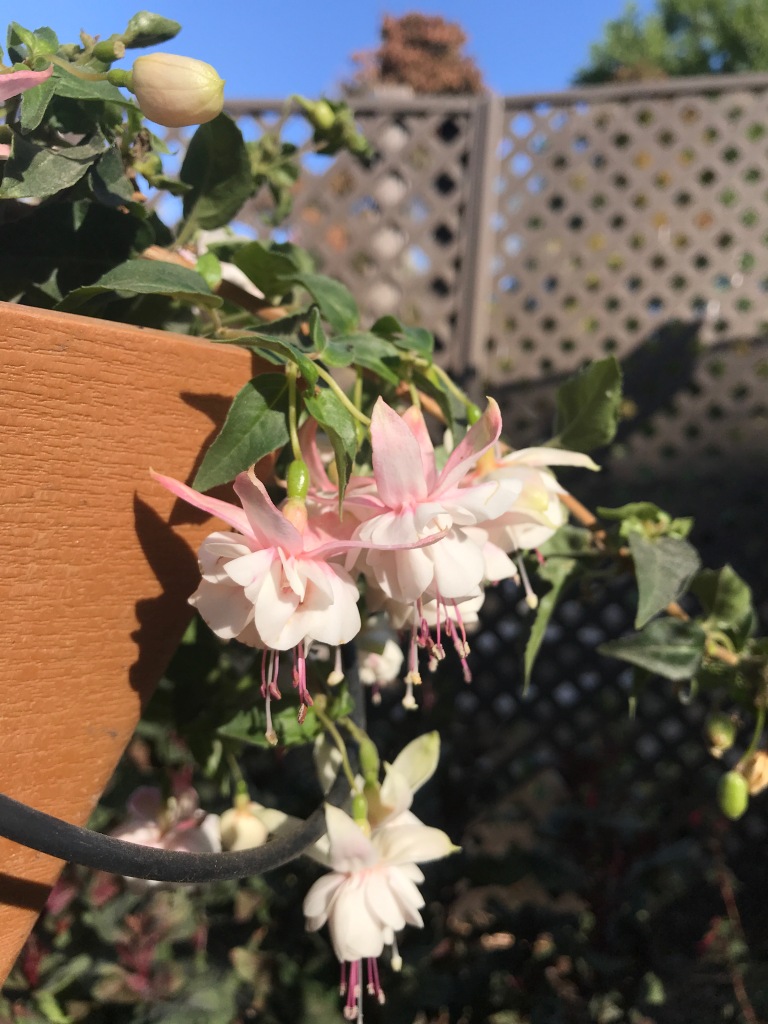
the fuschias were popping off! 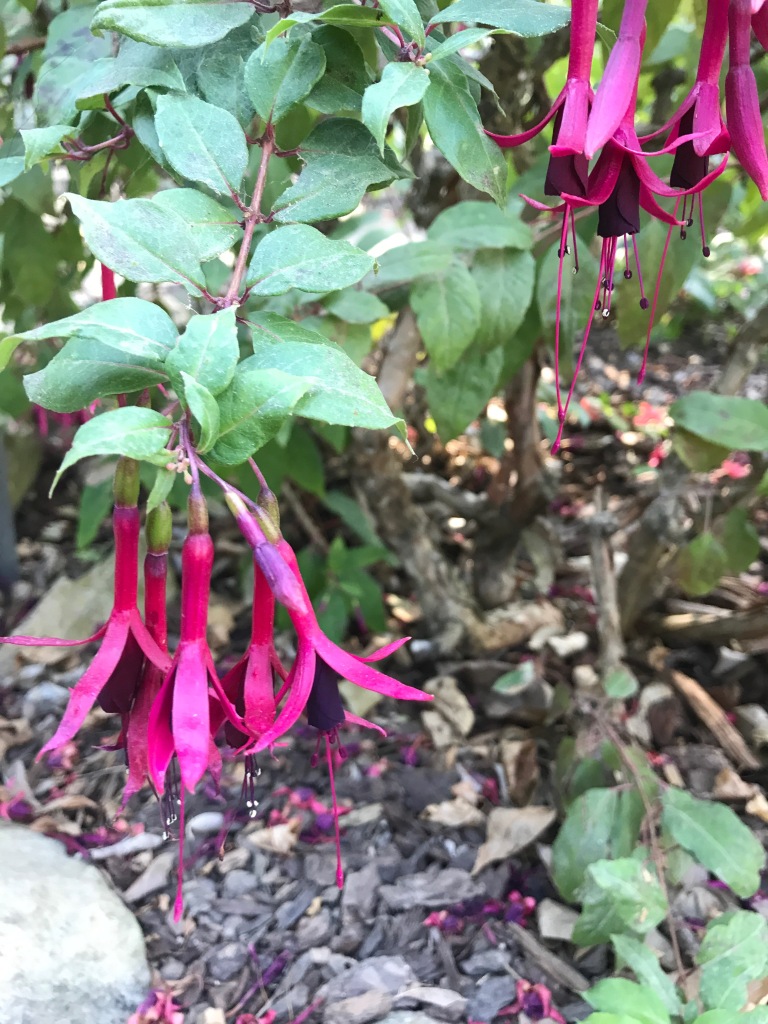

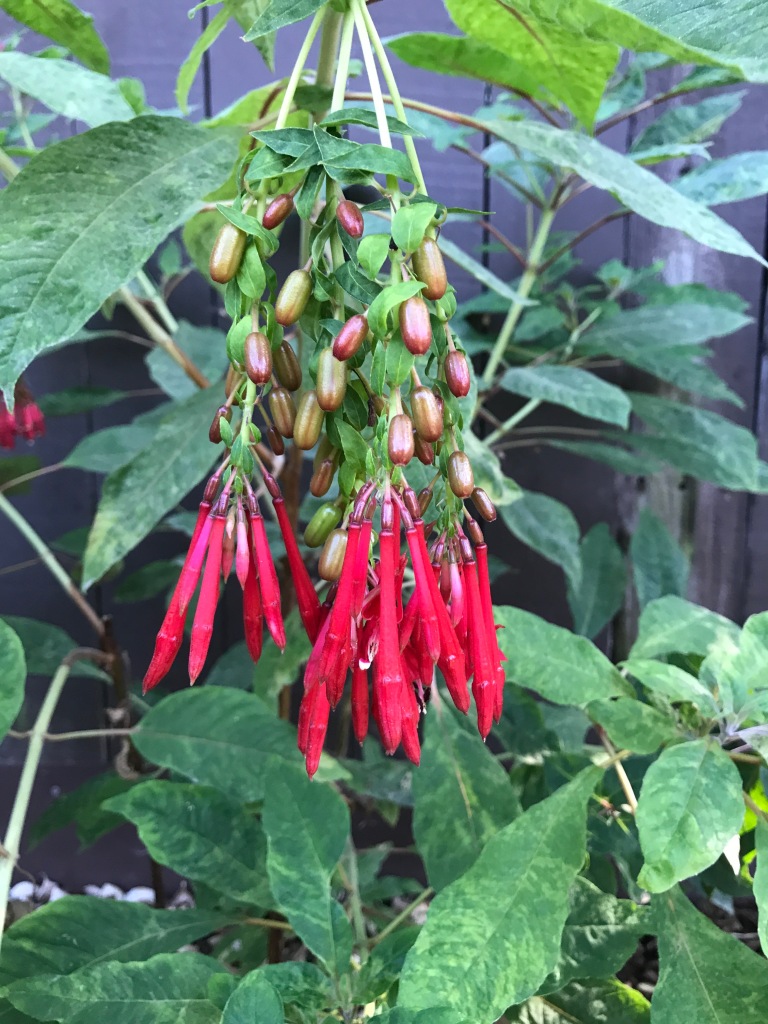

lots of little rest spots… 


on the way home! goats clearing the brush for fire safety and more
Goats Rock!
and in the garden… tomatoes are rising! Milo ventures outdoors and approves!


